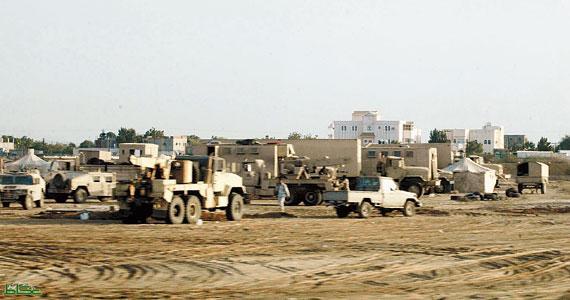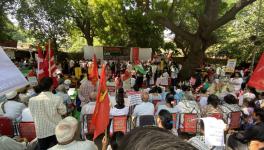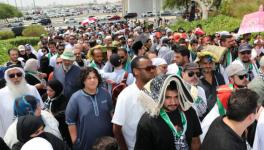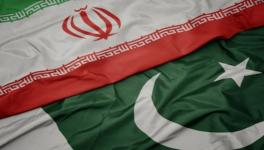Saudi War on Yemen: No Room for Retreat
After a month of savage bombing of Yemen, Saudi Arabia and its 9 allies have declared “victory” and now want peace talks. From Operation Decisive Storm, it is now Operation Restoring Hope. But instead of the promised peace talks, Yemen has seen further Saudi airstrikes, with a break of only a couple of days in between.
Meanwhile, the situation on the ground has become even more precarious -- with no electricity or running water, and food running short for Yemen's 23 million people. The one-month long bombardment of Yemen killed over a 1,000, wounded around 4,000, and rendered homeless another 150,000 people. The Saudi alliance has bombed power plants, dairy farms, industrial establishments and population centres, including the capital Sa'na. None of the original aims that the Saudis had proclaimed – driving back the Houthis and restoring to power Abd Hadi, the former President -- have been achieved.

Image Courtesy: en.wikipedia.org
So what was the bombing about? And why have the Saudis stopped? (Of course, this stopping is only by degree: they now fly 20 sorties a day against 100 they did earlier.)
Evidently, the Saudis have miscalculated badly. Along with their Gulf monarchy allies, they thought they could fight a Play Station war, with their spanking new aircrafts and missiles, while the Pakistanis and the Egyptians would provide the foot soldiers to fight the Houthis on the ground. To their rude shock, the Pakistanis refused. Even Nawaz Sharif, known to be very close to the House of Saud, knew that the price of a sectarian land-war, fought in Yemen with the Pakistani Army, would be much too high for Pakistan. While Egypt’s al Sisi was willing to help with its navy, Egypt was not willing to get bogged down in another land war in Yemen. Without a land invasion, aerial bombardment hurts the civilian population, but does not change the equation on the ground. The Houthis’ offensive in the south against Aden and other towns continued, and there was no Houthi withdrawal from the capital, Sa'na.
Meanwhile, al Qaeda in Yemen stepped in. It captured Mukalla, the capital of Hadramawt province, virtually without a fight. The brigade defending Mukalla was commanded by Ali Mohsen, who is known to be close to the Saudis and currently sheltered by them. He directed his soldiers to lay down arms, which they promptly did.
Though the Saudis deny it, it is not the best kept secret in the world that much of the funding for al Qaeda, the ISIS and other sectarian militias come from the Saudi and other Gulf monarchies. There is little doubt that Saudis are in tacit alliance with al Qaeda in Yemen, just as Israel, Jordan and Turkey are helping Jabahat al Nusra, the al Qaeda affiliate in Syria against the Assad government.
Yemen, like Iraq and Syria, presents a mosaic of interests. The Saudis and al Qaeda are fighting against Houthis. The US, which supposedly regards al Qaeda as its key enemy, is providing the Saudi alliance with key battlefield alliance. Interestingly, the US which was conducting a high profile drone war against al Qaeda in Yemen, stopped their operations just before the Saudis' Yemen war.
The Saudis have painted the Yemen conflict as a part of a Shia-Sunni battle, in which they and other Sunni kings are fighting a proxy war against Shi'ite Iran. Most of the mainstream western media also echoes this description of the conflict. Even well-meaning commentators warn against becoming entangled in this “sectarian religious war dating back 1,300 years” in the Middle East.
This, of course, is hog wash. There never was a 1,300 year Shia-Sunni conflict in West Asia. Just as there was no six hundred year war between Catholics and the Protestants in Europe.
Many of the countries now in this sectarian conflict never had such conflicts in the recent past. Iraq and Syria were secular countries with secular education, a secular army; people lived in integrated neighbourhoods. Yemen had a progressive socialist government in the south. The wars the US introduced in the region, and their object of breaking the existing social fabric, led to the emergence of the Shia-Sunni sectarian conflict. Shias in Iraq were first incited against Sunni domination by the Ba'ath as Saddam Hussein was Sunni; and the reverse was done in Syria, claiming that Sunnis should fight the Shia dominance of Bashar al Assad's Bath.
As Aijaz Ahmad in his discussion with Newsclick explains, there is no Shia-Sunni sectarian conflict in West Asia, but a Wahabi assault on Islam – both on the Shia and Sunni forms of Islam that differ from this Wahabi form. And it is Wahabi, this brutal, deviant form of Islam, distinct from the Islam widely practiced by the Muslims in this region and outside, that is supported by Saudi Arabia with its petro-dollars. It is the Saudis, and their ideological allies – the al Qaeda, the IS or ISIS, other “jihadi” groups – who drive this so-called Shia-Sunni conflict.
The Iran Houthi link is a weak one. The Shias of Yemen share very little with the Shias of Iran. Houthis do not need weapons from Iran – Yemen is awash with them, much of it “donated” by the Americans to the Yemeni army to fight the al Qaeda. Those weapons have fallen into the hands of the Houthis and the troops loyal to the former President Saleh, the predecessor of Hadi, who is now in alliance with the Houthis.
Unfortunately, the UN and the world have not done well by Yemen. The Security Council Resolution passed on 14th April did not call for peace in Yemen. Instead, it imposed sanctions on the Houthis. The west and all the Arab states sided with the Saudis in the UN; all others, except the Russians, fell in line. The Russians, finding themselves alone, decided to abstain. The American armada are now near the shores of Yemen, presumably to enforce this embargo. Iranian naval vessels have moved away from Yemeni shores to avoid a naval conflict with the US.
So where does Yemen go from here? Clearly, the Saudis have been unable to bribe or brow-beat others to provide them a land-army in Yemen. The only forces on the ground they can ally with are the al Qaeda or the IS, which has also made an entry into Yemen. While bombing from the air with their new planes may prove attractive to the Saudi princes, it is a public relations disaster. It must have also dawned on the Saudi monarch, however senile he might be, that a failed state, awash with weapons on the borders of Saudi Arabia, does not portend well for the House of Saud.
The Saudis are learning that getting into a war is easy, but getting out of it is much more difficult. This is what the US also discovered in Afghanistan and Iraq. The only way the Saudis can hope to get out of Yemen is by engaging with the Houthis and involving Iran. This is what even their allies – Turkey and Pakistan – are advising them to do. But were they not in Yemen to fight Iran?
Having bribed or coerced the world into supporting a war in Yemen, the Saudis have very little wiggle room. They either ally with al Qaeda and IS, bribe other Yemeni groups to fight a Wahabi Islam versus the rest war in Yemen, or sit down with Iran and the Houthis. They have run out of all other options.
Disclaimer: The views expressed here are the author's personal views, and do not necessarily represent the views of Newsclick
Get the latest reports & analysis with people's perspective on Protests, movements & deep analytical videos, discussions of the current affairs in your Telegram app. Subscribe to NewsClick's Telegram channel & get Real-Time updates on stories, as they get published on our website.
























